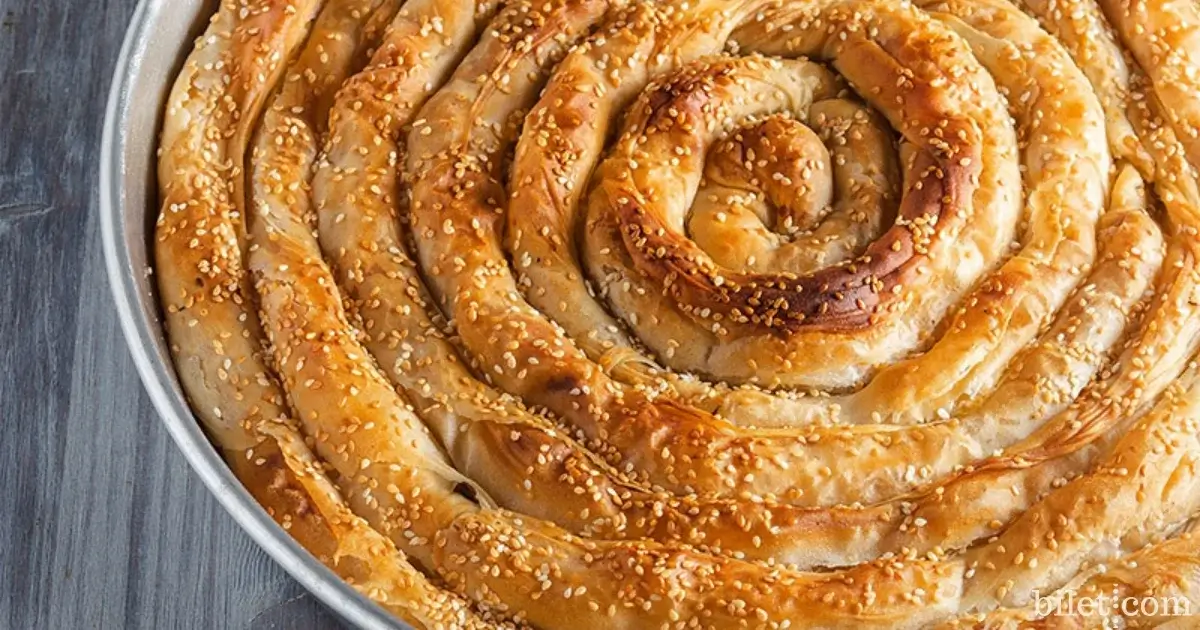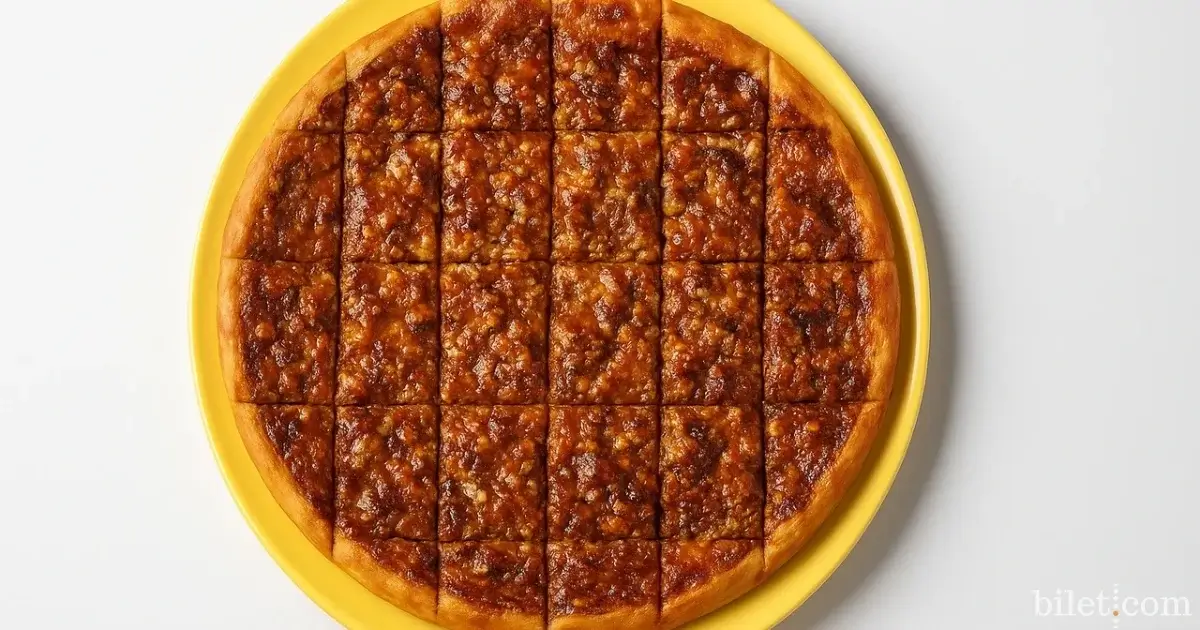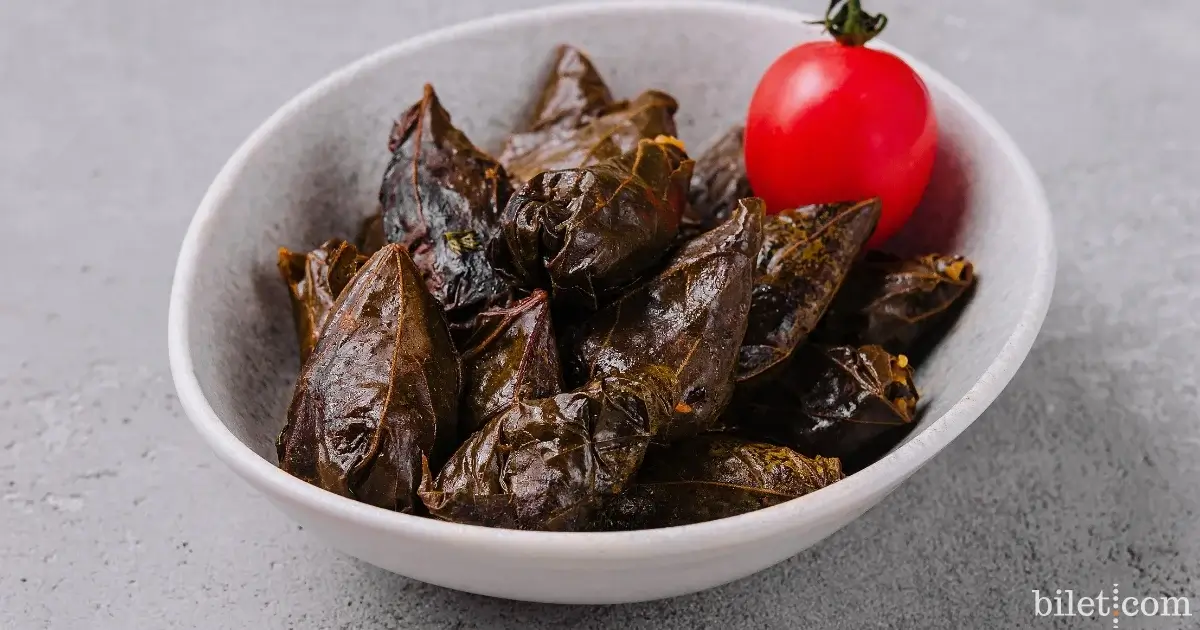From the stone ovens where the aroma of tandoori wafts to the villages where homemade tarhana is spread, an authentic culinary story greets you at every step. Returning from the white travertines of Pamukkale without tasting the local "Denizli kebab" or savoring "keşkek" with an ice-cold buttermilk drink is practically impossible.
What to Eat in Denizli
In this article, you will discover the local dishes, desserts and best local restaurant recommendations that you should definitely try in Denizli.Denizli Kebab

A visit to Denizli without tasting Denizli kebab is practically a complete incomplete experience! This legendary delicacy, a symbol of the city, isn't just a dish; it's practically a tradition. Usually made with goat or lamb, Denizli kebab is slowly cooked for hours in stone ovens. Because the meat is cooked in its own fat, no extra oil or spices are added, and its natural flavor, aroma, and tender texture make it a real hit.
Interestingly, Denizli kebab is usually eaten early in the morning! Yes, you heard that right—it's served for breakfast here. If you're ever in Denizli, don't leave without following the scent of authentic Denizli kebab cooked over a wood fire and tasting it from a local chef.
Keskek

Keşkek is, of course, an essential part of Denizli cuisine. A staple at weddings, holidays, and village festivals, this traditional dish is born from the exquisite harmony of ground wheat, meat (usually lamb or chicken), and butter. After hours of mixing, keşkek reaches a smooth consistency and is served drizzled with toasted butter and red pepper flakes. This simple yet satisfying dish is one of the dishes that best reflects Denizli's welcoming village culture.
Chaput Vaccine

One of Denizli's most interesting dishes, çaput aşı (a type of soup), takes its name from the pieces of yufka (a type of flatbread) added to it. The word "çaput" refers to these pieces of yufka (a type of flatbread). This hearty dish, typically made with a combination of lentils, chickpeas, and yufka (a type of flatbread), is enjoyed both as a soup and as a main course. A heart-warming treat, especially during the winter months, çaput aşı is served flavored with butter and onions. With its homemade texture and a true "mom's food" feel, this recipe perfectly embodies Denizli's simple yet flavorful cuisine.
Pepper Tatar

Pepper tartar, a beloved appetizer and salad in Denizli cuisine, is sure to be a favorite among spicy food lovers! This delicacy, made with finely chopped roasted or boiled green peppers, combined with garlic yogurt, is topped with a drizzle of hot butter. Despite its simple ingredients, it creates a truly aromatic and appetizing flavor. Often served alongside meat dishes or as an appetizer, pepper tartar adds both color and flavor to Denizli tables.
Egyptian Tomb

One of Denizli's regional pastries, Mısır gömbe (corn gombes), is a traditional dish especially beloved in Buldan and its surrounding area. The dough, kneaded with corn flour, yogurt, milk, and a little olive oil, is formed into a round shape and baked on a griddle or in the oven. Slightly crispy on the outside and soft on the inside, this gömbe is often enjoyed for breakfast or teatime. Served hot, it pairs beautifully with a little butter, feta cheese, or olives. Reflecting the warm culinary culture of Anatolia, Mısır gömbe is a must-try regional dish in Denizli.
New Year's Pastry

One of Denizli's most distinctive pastries, yen böreği (a type of pastry), holds a special place in the local cuisine for both its preparation and flavor. It's made by layering thin sheets of hand-rolled phyllo dough with a mixture of ground meat, onions, and spices. It's then placed on a baking sheet and baked until lightly golden brown. The result: a börek with a crispy exterior, a soft interior, and a wonderful aroma!
In Denizli, yen böreği, served to guests with tea, especially on holiday mornings, is practically a tradition for the locals. Made with simple ingredients, this börek proves just how satisfying simplicity can be in Denizli's homemade delicacies.
Süller Pita

Named after the village of Süller in Denizli's Çal district, Süller pidesi is a staple of village bakeries, made with the same recipe for years. Thinly rolled dough is topped with a mixture of ground meat, onions, tomatoes, and spices, and baked in a stone oven. What makes this pide special, however, is that it's covered after baking—this allows the filling to steep in its own steam, creating a soft, fluffy texture.
Süller pide is usually enjoyed hot for breakfast or lunch. Accompanied by a glass of ayran or homemade grape compote, it becomes a delicious meal that reveals the heartfelt flavor of Denizli's village cuisine.
Raw Stuffed Vegetables

Raw dolma, one of the most distinctive flavors of Denizli cuisine, is, as its name suggests, a type of stuffed vine leaves prepared without cooking. Typically wrapped in vine leaves or kale leaves, the filling consists of fine bulgur, tomato paste, spices, onions, and plenty of greens. Because it's wrapped completely raw, uncooked, it earns its name "raw dolma."
The stuffed leaves are left to rest for a while to soften, then served with a drizzle of olive oil. With its slightly sour, spicy, and refreshing flavor, it's a popular cold appetizer, especially during the summer months. Raw stuffed vegetables, a popular choice on Denizli tables as a practical and delicious snack, reflect the creative and simple side of the local cuisine.
Black-Eyed Peas Pastry

One of Denizli's most interesting pastries, the black-eyed peas pastry, takes its name from the boiled black-eyed peas used in its filling. Usually made with boiled black-eyed peas, onions, greens, and sometimes a small amount of cheese, the filling is placed between hand-rolled sheets of phyllo dough and baked on a griddle or in the oven.
Unlike classic börek, black-eyed peas börek is both nutritious and light, making it a favorite especially during the summer months. Still made using traditional methods in the rural areas of Denizli, this börek combines Aegean cuisine's love of vegetables with pastries. Paired with a glass of ayran, it offers a simple yet unforgettable regional flavor experience.
Denizli Style Katmer

Denizli-style katmer is a delicious pastry, frequently featured on both breakfast and teatime tables. The thinly rolled dough is buttered, rolled into layers, and baked on a griddle or in the oven. Crispy on the outside and soft on the inside, this katmer can be made plain or with cheese, poppy seeds, or sugar.
Served hot for breakfast in Denizli, especially in the villages, katmer pairs perfectly with freshly brewed tea. Made with simple ingredients yet unforgettable for its flavor, Denizli-style katmer perfectly showcases the locals' mastery of pastry.
Squealing

Cızlama, one of Denizli's most beloved breakfast dishes, resembles crepes or akım in appearance, but its distinct flavor is instantly recognizable. Made with flour, milk, eggs, and a little salt, the cızlama dough is cooked in a thin layer on a griddle. The faint "sizzling" sound it makes as it cooks derives its name.
It's typically served spread with butter or with sweet toppings like honey, molasses, or jam. In some regions, a savory version is preferred, accompanied by cheese or greens. This light pastry, which melts in your mouth when eaten hot, is a staple on Denizli breakfast tables.
Sausage Flour

One of Denizli's lesser-known but surprisingly delicious dishes is sucuklu flour. As the name suggests, this local recipe is based on toasted flour and sucuk. After lightly browning the flour in butter, diced sucuk is added, then mixed with a small amount of water or milk to create a thick, porridge-like consistency.
The result is a flavor that's both filling and quite aromatic. Sucuklu flour, often enjoyed hot during the winter months, especially on cold mornings, is a practical yet unique recipe from Denizli cuisine. Paired with a glass of ayran or strong tea, it makes for a simple yet delicious meal.
Grinding

Cerpleme, a local delicacy from Denizli, is a popular choice, especially for village breakfasts. It's a simple dough made with flour, eggs, milk, and a little salt, then cooked in a pan with butter. While resembling a crepe in appearance, cerpleme stands out with its thicker consistency and the delicious aroma of butter.
Once cooked, it's usually served piping hot, sweetened with honey, molasses, or granulated sugar. In some regions, it's also made savory and served with cheese or yogurt. Cerpleme, which packs a punch with just a few ingredients, is one of the best examples of Denizli's simple yet delightful village cuisine.







